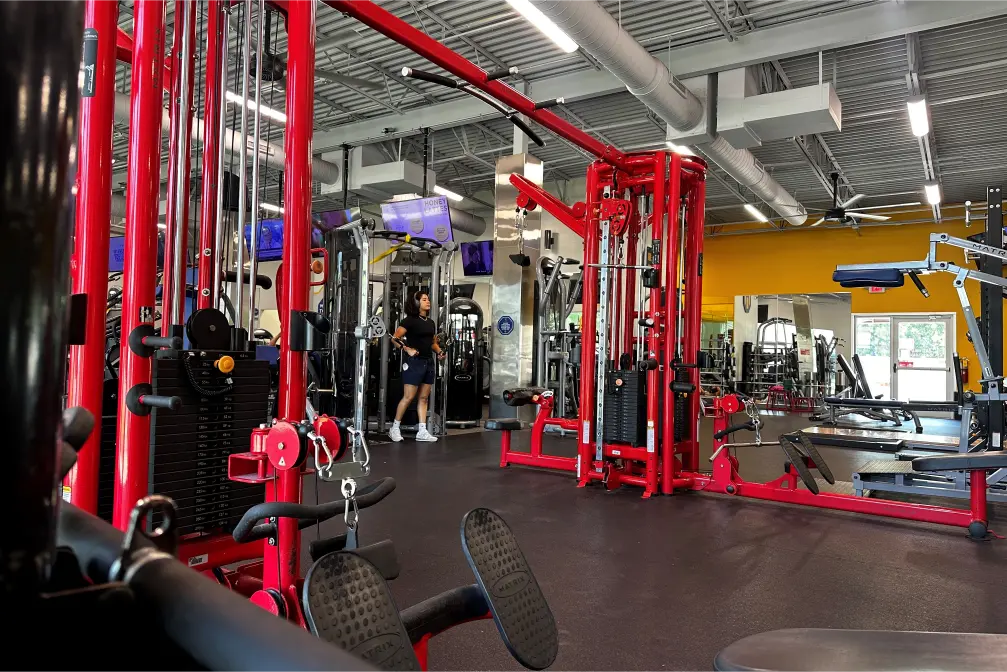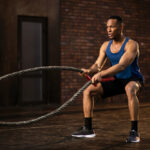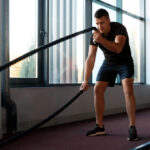HIIT has been celebrated for its efficiency and effectiveness, especially for those looking to maximize their fitness results in minimal time. When you add weights to your HIIT workouts, the benefits multiply, leading to increased strength, enhanced endurance, and faster fat loss. This guide will dive deep into how to effectively integrate weights into your HIIT routines to engage your entire body, boost your metabolism, and break through fitness plateaus.
What you need to know before starting
HIIT is demanding and requires your body to adapt quickly between intense exertion and recovery. Adding weights increases the intensity, making proper form and preparation even more essential to prevent injury.
Start with a clear goal in mind, and make sure you’re comfortable with basic HIIT principles and weightlifting techniques. It’s also wise to consult with a fitness professional if you’re new to this style of training. If you need an expert personal trainer who can adjust HIIT workouts with weights specific to you, make sure to visit HiTone Fitness Gastonia.
Choosing the right weights for your HIIT workout
The weights you choose can significantly impact the effectiveness of your workout and the risk of injury. Common options include dumbbells, kettlebells, and barbells, each offering unique benefits:
- Dumbbells: Versatile and ideal for a range of exercises, they help improve muscular imbalances and are perfect for unilateral exercises.
- Kettlebells: Excellent for dynamic movements such as swings, cleans, and snatches, which are staples in HIIT workouts.
- Barbells: Suitable for heavy lifts and compound movements like squats, deadlifts, and presses.
For beginners, start with lighter weights that allow you to perform exercises with proper form. As you progress, gradually increase the weight to challenge your muscles and enhance endurance.
Warm-up routines
A proper warm-up is a non-negotiable part of any HIIT workout, particularly when weights are involved. Start with 5 to 10 minutes of light cardio (jogging, cycling, or rowing) to increase your heart rate and blood flow to your muscles.
Follow up with dynamic stretches—like leg swings, arm circles, and torso twists—to enhance mobility and reduce the risk of injury. Incorporating activation exercises such as glute bridges and plank shoulder taps can also prepare your body for the intense work ahead, ensuring all the right muscles fire during your workout.
Upper body HIIT workouts with weights
Focus on exercises that target your chest, back, shoulders, and arms for a comprehensive workout. Here are some effective upper body exercises:
- Push-ups with dumbbell rows: After each push-up, perform a row with each arm. This combines chest and back strengthening.
- Overhead press: Use dumbbells or a barbell to work the shoulders and upper back.
- Bicep curls to shoulder press: Transition from a bicep curl into a shoulder press with dumbbells for a compound movement that challenges multiple muscle groups.
Perform each exercise for 30 seconds, rest for 15 seconds, and complete 4-6 rounds. This interval structure maximizes muscle engagement and fat burning, making your workout both efficient and effective.
Lower body HIIT workouts with weights
Lower body workouts with weights not only build strength and power but also enhance calorie burning due to the large muscles involved. Here are key exercises to include:
- Squats with dumbbells or a barbell: This fundamental exercise targets the entire lower body and core.
- Lunges with kettlebells: Hold a kettlebell in each hand or rack position to add intensity to forward or reverse lunges.
- Deadlifts: Essential for developing the posterior chain, including the hamstrings, glutes, and lower back.
Like with the upper body, perform each lower body exercise for 30 seconds, rest for 15 seconds, and aim for 4-6 rounds. Adjust the weights to maintain proper form throughout each exercise.
Full body blends
Combining upper and lower body exercises in a single HIIT workout can provide an exhaustive session that maximizes efficiency. Here’s a sample full-body HIIT routine:
- Burpee with overhead press: Perform a burpee, then grab dumbbells to execute an overhead press.
- Thrusters (Squat to press): A full-body compound movement that engages the legs, core, and shoulders.
- Kettlebell swings: Target the glutes, legs, and back while boosting your cardiovascular endurance.
Cycle through these exercises for 45 seconds of work followed by 15 seconds of rest, completing 3-5 rounds for a challenging full-body workout.
Common mistakes to avoid
When engaging in HIIT workouts with weights, common mistakes can hinder your progress and increase injury risk:
- Ignoring proper form: Always prioritize form over speed or weight to prevent injuries.
- Skipping warm-ups and cool-downs: These are crucial for preparing your body for intense activity and aiding in recovery.
- Using weights that are too heavy: Start with a manageable weight and increase only when you can maintain proper form.
Final thoughts
Full-body HIIT workouts with weights are a dynamic way to enhance muscular strength, improve cardiovascular health, and burn calories efficiently. By incorporating the exercises and techniques outlined in this guide, you can enjoy a varied, challenging, and rewarding fitness routine. Whether you’re a beginner or a seasoned athlete, these workouts can be adapted to fit your fitness level and goals, ensuring that you not only meet but exceed your health and fitness aspirations.





